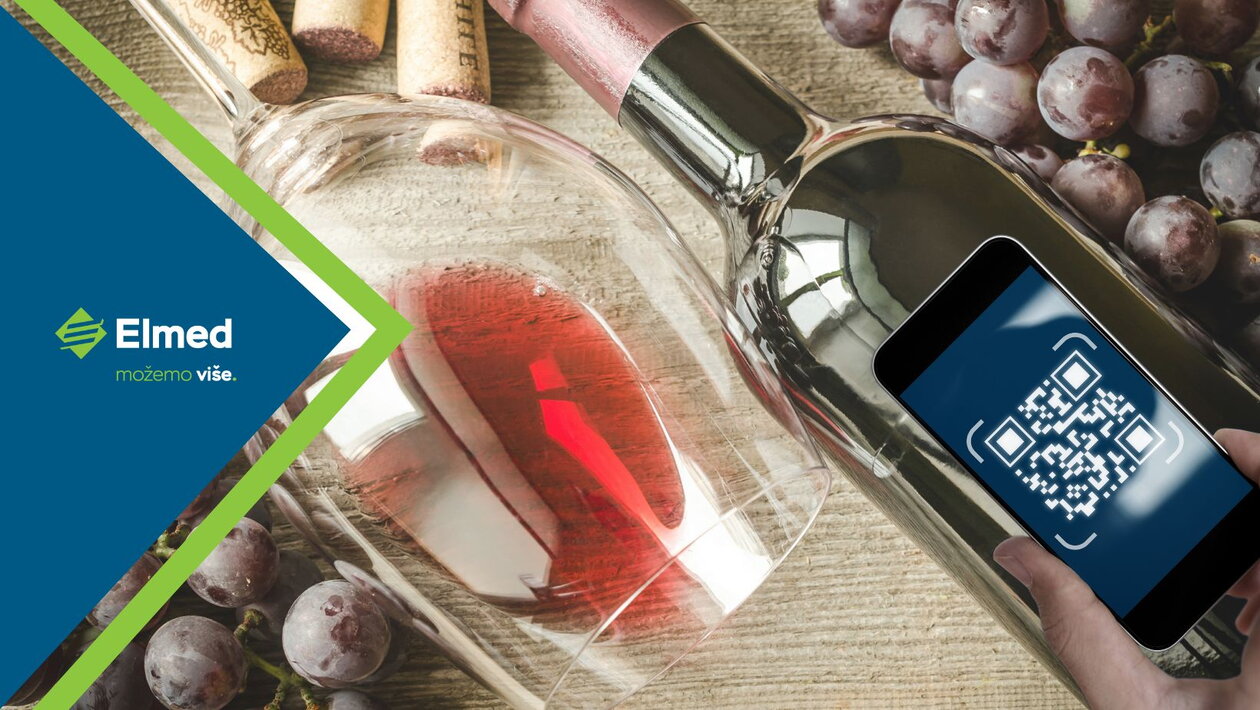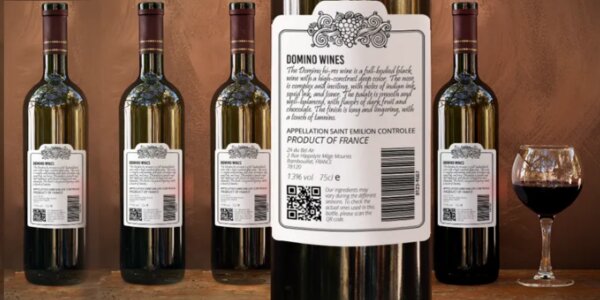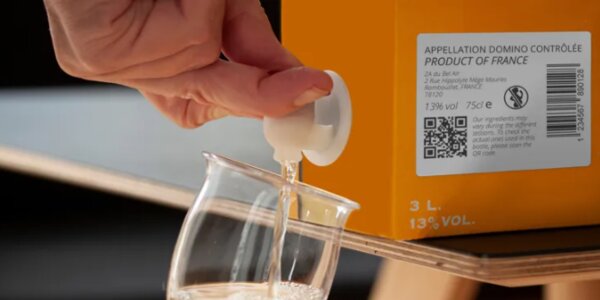The new EU Regulation on wine labelling: what you need to know

The European Union has introduced new wine labelling guidelines, effective on December 8, 2023.
This blog serves as a practical resource for wine manufacturers, to delve into the details of these regulations and offer clear, actionable steps to help you prepare effectively.
From understanding the intricacies of labelling to practical readiness, we've got you covered with everything manufacturers need to navigate the new EU wine labelling regulations.
What does the regulation dictate?
The new EU Regulation 2021/2117 aims at standardising wine labelling across the European Union, with a new requirement to include information on ingredients, allergens, and nutritional content on all the bottles of wine sold in the EU. Notably, these regulations also embrace the use of dynamic 2D codes, revolutionizing the way wine information is shared with consumers.
The new regulations also embrace 2D codes as a new, innovative method of sharing information to enhance consumer confidence and ensure compliance with the new labelling requirements. The regulation proposes the use of dynamic 2D codes to provide real-time access to detailed product data, rather than listing all required information on the printed wine label.
These regulations are expected to have a significant impact on the wine industry. For producers, the new rules will mean additional costs and complexity in complying with the new requirements. However, the new rules could also allow producers to differentiate their wines and appeal to consumers looking for more information about the wines they buy.

What happens if my products are not compliant with the legislation?
ŽFailure to comply with the new European regulations for wine labelling may result in fines, penalties, product recalls, and potential loss of certifications or designations for winemakers. Non-compliant products may be restricted from certain markets within the European Union, with winemakers also facing legal implications and reputational damage. A thorough understanding of the new regulations is therefore crucial for maintaining consumer trust, remaining compliant, and safeguarding the overall reputation and marketability of the winemaker’s products.
What’s the difference between dynamic and static 2D codes?
A static 2D code is created with fixed information that remains unchanged throughout its lifespan. The encoded data within the code is pre-determined and cannot be modified once the code is generated. Static codes are typically used when the information associated with the product, such as a serial number or a unique identifier, does not need to be altered or updated after the code is applied.
In contrast, a dynamic 2D code allows for real-time updates and modifications to the encoded data, even after the code is printed or marked on a product. This dynamic capability is achieved by linking the code to a dynamic webpage that contains the updated information. These codes will also enable producers to share details like vineyard specifics, winemaking techniques, and sustainability practices as far as it’s not considered marketing. Some entities are already reacting and developing solutions like U-Label.
What are E-Labels?
In response to this new legislation and its technical challenges, different bodies and companies are developing a range of E-Label solutions. E-labels allow producers to create electronic labels easily, providing consumers with information through a QR code that can be scanned. The different platforms may include product characteristics, ingredient lists, nutritional information, pregnancy warnings, and responsible consumption messages. In some of the projects, by scanning the QR code on the bottle label, consumers can even access product-specific information in their own language.

What do I need to print dynamic codes on my products?
To print dynamic codes on your products, you will need the following:
- Code Generation Software:
You will need software capable of generating dynamic codes. This software allows you to create and manage dynamic codes by linking them to a centralised database or a cloud-based solution. The software should provide options for customising the data and managing updates. - Database or Cloud Storage:
To store the dynamic information associated with the codes, you will need a database or cloud storage solution. The storage system should be capable of handling the data and allowing for easy updates and retrieval. - Printing Equipment:
You will need appropriate printing equipment that can generate high-quality, readable codes on your product packaging or labels. This could include thermal printers, inkjet printers, laser printers, or other coding and marking technologies, depending on your specific requirements and the type of materials you are printing on. - Integration Capabilities:
Depending on your production setup, you may need to integrate your printing equipment with your code generation software and database. Integrating printers and coding software allows for seamless communication between the systems, enabling real-time updates and accurate printing. - Quality Control Processes:
It is essential to implement quality control processes to ensure the accuracy and readability of the printed dynamic codes. Although regular checks can be conducted to verify that the codes are scannable, we recommend the use of a vision system to check every single product.
What technology can I use to print dynamic codes onto my products?
In a typical wine production line, the printer is often integrated into the labelling machine or located adjacent to it. This allows for seamless coordination between the printing and labelling processes, ensuring that each label is appropriately coded before or after being affixed to the wine bottles.
Domino provides solutions tailored to the needs of each customer, from product to pallet. To identify the appropriate solution, we will need to consider: •
- Print requirements
- Speed requirements
- Space availability
- Existing production line set up
Due to the uniqueness of each of these facts, the ideal solution is very likely to be a bespoke one.
What will the new wine labels look like?
In most cases, wine labels will require a QR code and a minimum of two lines of text, including the degree of alcohol, the best-before date, and additional nutritional information required as part of the EU labelling regulation.

Printing on wine bottles
Wine labels can be printed before being applied to a bottle, with a printer included as part of an existing labeller, or afterwards, with a printing solution included along a conveyor belt.
It is possible to print the data on the adhesive label using a thermal Inkjet. In this configuration, the data is printed before the back label is applied. Other solutions may be available if it is not possible to integrate the printer into the labeller. Wine manufacturers should speak to their coding and marking provider for bespoke configurations.
The data can also be printed on the back label once it has been affixed to the bottle, whether it is self-adhesive or cold glued in the labelling machine. For this type of application, laser and inkjet are ideal solutions, and very popular with our customers.
Printing on bag-in-box (BIB) packaging
The two primary methods include having it printed directly onto the box or adding it via an adhesive label. Direct printing allows for a seamless integration of the QR code onto the wine box. This process can be accomplished either by laser technology on a flat colour surface or utilising conventional thermal inkjet processes. It should be noted, however, that the chosen technology depends on where the coding equipment is situated within the production line, whether it is before or after the shaping of the box. If a more traditional method is preferred and direct printing doesn't align with your brand's aesthetic, then label printing is an effective alternative. By simply designing and printing a label with all the necessary data, it can be affixed easily to the wine box.
What technology can I use to inspect dynamic codes onto my products?
Vision systems play a pivotal role in guaranteeing that each product exiting your factory bears a code that adheres to the rules. If implemented effectively, it shields wine manufacturers from the adverse potential of penalties, legal entanglements, and tarnished reputations. In essence, vision systems are high-speed cameras equipped to scrutinize and validate each code for compliance. Domino offers an option in this regard, the R-Series, which is available with varying grades of protection.
Domino can also code your boxes and pallets
Equipped with an extensive understanding and seasoned expertise in pallet coding, we guarantee superior quality and swift labelling that is long-lasting, easy to comprehend and effortless to implement on your products. Our premium pallet labelling solutions integrate smoothly into your production channels and IT systems, thus ensuring the sustained motion of your production and a consequent reduction in operative costs. This facilitates the continuous tracking of your goods at each juncture within the supply chain, hence providing an assurance that your product is persistently monitored.
How can Elmed help me?
Along with Domino Solutions, we started the production of self-adhesive labels at Elmed's printing house.
Thanks to many years of experience and production capacities, we are able to offer you a wide range of digital, flexo and premium solutions depending on your requirements.
New regulations should not be just another compliance, use this opportunity to implement new solutions in your production processes and thereby automatically increase your efficiency. We recognize that no two businesses are the same and are committed to helping manufacturers identify the ideal solution for their specific needs.
